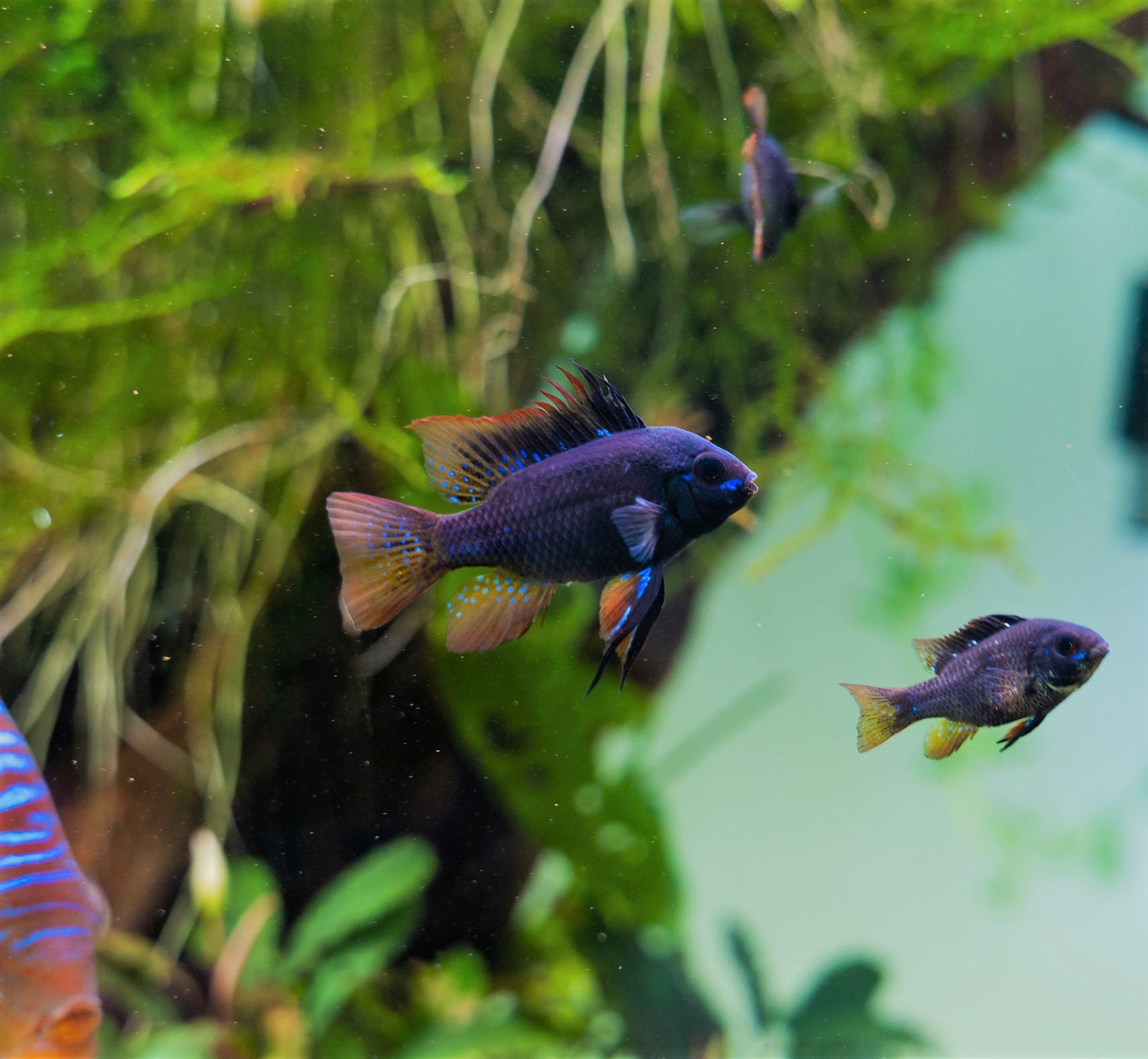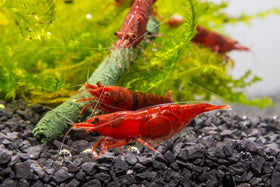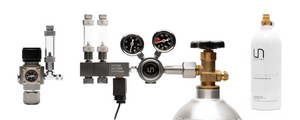
Tips for Beginners in the Aquarium Hobby
Written by: Tammy (@aquarist_tl) and Team Buce Plant
Starting a new hobby can be fun and exciting, but it can also be challenging. Especially a hobby like fish-keeping that involves taking care of live animals. In general, a lot of people go into the aquarium hobby not knowing much about anything in relation to aquatic life. So when they begin their first aquarium, and continuously run into issues with their fishes’ health or other problems, it can discourage them from moving forward on their fishkeeping journey.
Hopefully, these tips will help those interested or new to the aquarium hobby and allow them to start with a stronger understanding of how to raise freshwater fish.
Do Your Research
The best thing you can do before physically starting this hobby is to do your research. Plan out what specific fish or style of tank you want. If there’s a specific fish that you’re interested in keeping, find out its preferred water parameters (i.e. temperature, pH, hardness) and its max size as an adult.
Fish tend to do much better in water that is similar to what they’re already used to, and the fish’s max size will help you determine what size tank to get. Seeing the fish at the store can be deceiving because they’re often sold as young juveniles, so make sure to ask an employee or look online to find the fish’s adult size before making the purchase.
If it’s the other way around, where you want or received a tank that’s a specific size, then you can create a list of fish you’re interested in keeping that are suited for that tank size. Make sure all of the fish prefer to be kept in similar parameters. For example, don’t keep a coldwater fish like goldfish with a fish that prefers warm water like discus.
While most tropical fish prefer temperatures around 78F, gold rams like to be in temperatures as warm as 84F
Other things to be on the lookout for are the fishes’ compatibility with others and their levels of aggression. One of the most eye-catching fish in the hobby are male betta fish because of their vibrant colors and styles of finnage. Male bettas should not be kept with another betta in the same tank (unless it’s a female for breeding instances) because of their high aggression towards others of their own species.
Another thing to point out is to try and avoid getting fish with huge differences in size. Most fish are omnivores and will try to eat other fish if they can fit them in their mouths. Your new tank addition could end up being a gourmet meal for your larger fish!
Recognize the Condition of a Fish
One way to help start off strong in the aquarium hobby is by beginning with healthy fish. Being able to differentiate between sick and healthy fish will give you a greater advantage towards success.
Fish in good condition will be active and some might even be responsive to you. For example, if you put your hand above the tank to imitate “feeding time”, healthy fish are likely to swim to the top to try to be the first to grab a bite! They should be able to swim properly and should not struggle against the current.
Here are some signs of sickness to watch out for:
- White spots resembling grains of salt on the body/fins (indicates an external parasite known as ich)
- Sunken belly / extremely skinny
- Lethargy / having no energy to move around
- Loss of balance / floating or twirling around in the water
- Torn or rotten fins
Guppies, bettas, and other fish with long tail fins are prone to fin rot, where it looks like the edges of their tails are frayed or rotting away
You can also use this knowledge to know whether the fish in your aquarium are healthy or not. Typically, if a fish is not eating or swimming around, there’s a good chance something’s wrong with it. That fish may need to be quarantined to prevent the sickness from spreading to other tankmates. Click here for an article that discusses quarantining fish.
Acclimation
After making a purchase or receiving fish from someone, you should always get the new fish accustomed to your water before adding them into the aquarium. If you don’t acclimate your new livestock, they could go into shock and become heavily stressed. So the question is, how do you add new fish to the aquarium?
Here are the two main ways of acclimating fish to their new aquarium:
Plop and Drop
Since temperature is the parameter that will initially shock the fish the most, this method focuses on getting the new water temperature and your tank's temperature to match.
- Have the bag of fish float in the tank’s aquarium water for at least 15 minutes. By this time, the temperature of the water in the bag should be about the same as the tank’s water temperature.
- Either pour the fish over a net sitting on top of a bucket or net the fish out and into the tank. The waters in fish store tanks could be full of disease, so it’s best practice to avoid getting any into your aquarium.
Drip Acclimation
The goal of this method is to slowly acclimate the livestock to every parameter of the tank water. It’s used often for sensitive species like freshwater shrimp.
- Use airline tubing to begin a siphon from the tank to a bucket / container holding the new fish. Tie a loose knot to slow the flow of the water so that it drips at a constant and steady rate (~1-3 drops per second).
- Once almost all of the water in the bucket becomes water from the tank, net the fish into the aquarium. If the temperature of the water in the bucket is different from the tank’s, you may want to consider doing a secondary acclimation using the Plop and Drop method.
Maintenance
Sometimes, newcomers make aquarium maintenance more complex than it needs to be. There’s a common misconception that the fish have to be netted out so the whole aquarium can be rinsed off. This is actually damaging to both the fish and the aquarium’s ecosystem.
Moving the fish causes unnecessary stress, while rinsing the entire aquarium can kill off beneficial bacteria needed to keep the water safe for the fish. To find out more about beneficial bacteria and why they are important, you can check out this article HERE.
The proper way of cleaning an aquarium usually involves these steps on a weekly basis:
- Turn off all equipment that can be damaged when out of the water (e.g. filters, heaters, water pumps)
- If there’s algae on the walls of the tank, scrape it off. The Qanvee Fixed and Adjustable Algae Scraper would be a useful tool for this job.
- Empty a percentage of water from the aquarium.
The amount you empty depends on the amount of fish you’re feeding and the size of the tank.
More food being fed means more waste that is built up, so if you have a lot of fish in a small tank you should empty at least 50%. If it’s a big tank with a few reasonably sized fish, then as little as 20% should be sufficient. Click here to learn more about the importance of water changes and what percentage of water change is best.
A gravel vacuum would make emptying the tank a lot easier, as gravity would do most of the work for you. You would also be able to suck out any waste in-between or on top of the substrate.
- If you have any sponges or filter media you want to clean, you should use the tank water you emptied for this instead of tap water. Keep in mind that you do not have to clean your filter every water change because you want to avoid harming any beneficial bacteria. Chlorine can be found in tap water and it will kill beneficial bacteria, so using tank water ensures the beneficial bacteria living in the media is kept alive. Simply wring the sponges in this water or rinse other forms of media in it.
- Fill the aquarium back up. Use water that is as close to the tank’s temperature as you can get it. If you have to choose between colder or warmer, choose colder since it can simulate rainfall in nature. Remember to add in the appropriate amount of water dechlorinator if you are filling the tank with tap water that contains any chlorine or chloramine.
- Turn back on any equipment that was turned off for the maintenance session.
- Observe the fish and make sure everyone looks fine.

Fishkeeping can be difficult at the start when you’re still learning. May this information help guide you towards success in this wonderful hobby!
Tell us - Was this article helpful? Please comment your thoughts below!
If you have any questions regarding this article, please DM us on Instagram or Facebook so we can assist you - @buceplant





Comments
Leave a comment